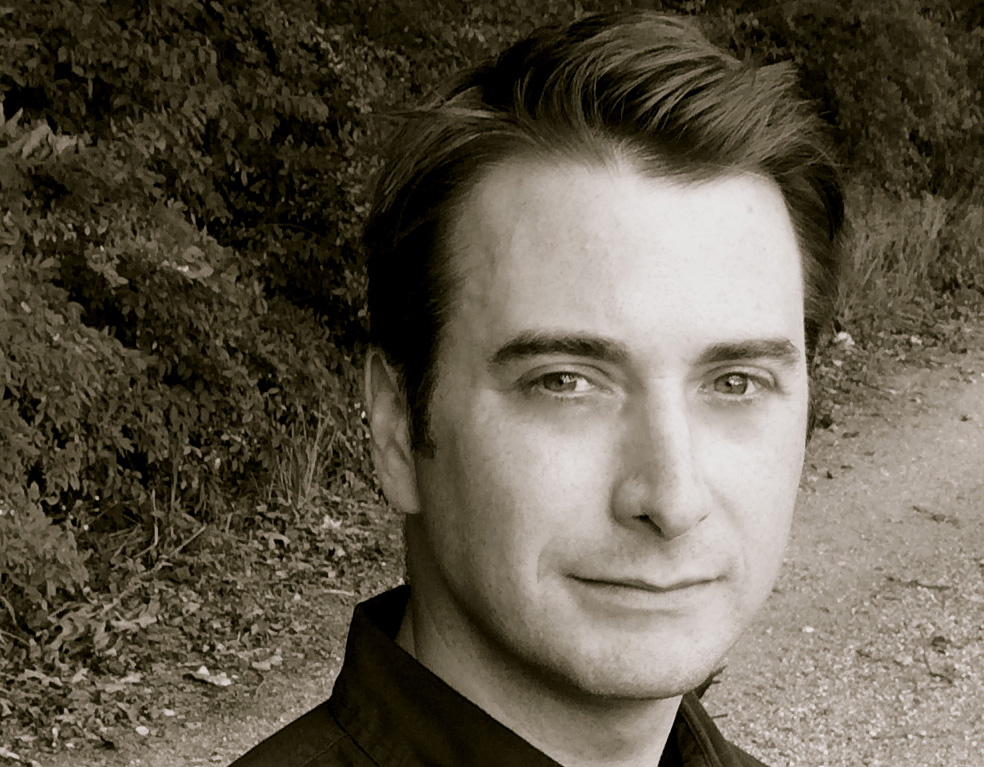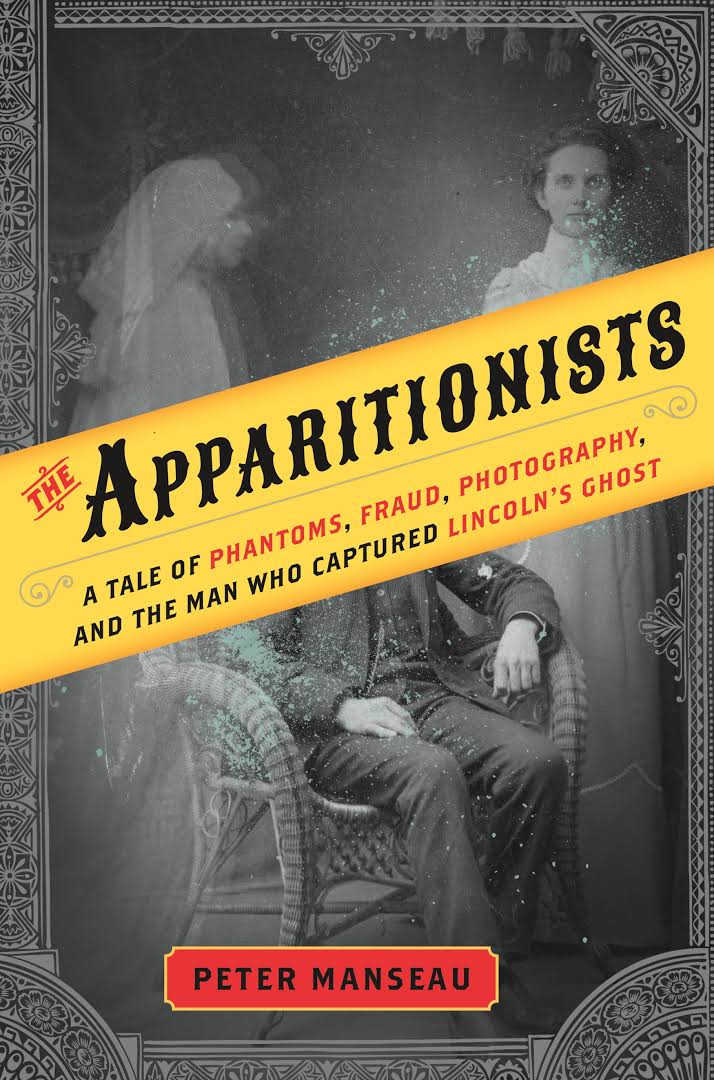The Writer's Practice: Peter Manseau

To write the story of 19th century charlatan photographer William Mumler is to write much of the story of the American 19th century itself. In Peter Manseau's latest book The Apparitionists: A Tale of Phantoms, Fraud, Photography, and the Man Who Captured Lincoln's Ghost, the award-winning author tells many tales: of the rise of photography, of the development of a distinctly American popular culture, of a nation left grieving in the wake of the Civil War, of a people aching for something to believe in — and finding it in Spiritualism and in William Mumler's "spirit photography."
Each of these histories features its own protagonist. The cast list includes early photographic innovator and telegraph inventor Samuel Morse, spirit medium Fannie Conant, Lincoln photographer Matthew Brady, and prototypical American showman P.T. Barnum. To tackle all of these stories, to corral all of these characters, Manseau first needed to create an all-encompassing structure. "Structure is story," he told Spine. "As soon as you figure out how to build it, you solve a lot of problems. Structure does a lot of work for you."
Cover Design: Jackie Shepherd
Much of the attention critics have given the book has been focused on William Mumler, and Manseau knew early on that the spiritual con man would serve as the book's human center. "When I happened upon Mumler, he spoke to something that I look for in figures that I write about generally. I like these quixotic religious characters," he said.
"Mumler would come up occasionally in short magazine articles, where he was presented as just another 19th century con artist. That’s certainly part of it, but also there's a current of American belief he tapped into in a very real way," Manseau said. At a time when the country was grieving the losses resulting from the Civil War, Mumler offered something that America needed: solace. Assurance that deceased loved ones remained close. Faith in a life beyond this one.
With Mumler situated at the story's core, Manseau knew he also wanted to share portions of other stories playing out on the same American stage. Around the point he had arrived at 50 pages, the MacDowell Colony awarded him a fellowship
"I knew the pieces that I wanted to have included in the puzzle of this book, but I wasn't sure how they would fit together," he remembered. "Having very unstructured time was entirely necessary" to honing in on the optimal narrative framework. What interested him beyond each individual character was the tension flashing back and forth, especially between the fathers of American photography such as Brady and early photojournalist Alexander Gardner and sensationalist photographers like Mumler. A back-and-forth structure for the book made sense.
"One of these figures is remembered as a fraud, as a notorious falsifier. The others are remembered as the iconic creators of photojournalism. I wanted to draw out that tension," Manseau explained. "That was the driving force of the whole book. It had to be the story surrounding belief and technology at this particular moment in American history. Knowing I wanted a point and counterpoint — that blueprint got me to a point where I realized I had more freedom."
About the time Manseau travelled to New Hampshire for his MacDowell fellowship, he sent a book proposal out to publishers. Publishers responded, and The Apparitionists landed at Houghton Mifflin Harcourt. Manseau, who has written five other works of historic nonfiction, said the current publishing climate is welcoming to books like his. "The great success of [Erik Larson's] The Devil in the White City or Karen Abbott's books [e.g. Liar, Temptress, Soldier Spy; Sin in the Second City], they really paved the way for books like this, this narrative-driven, character-heavy approach to history."
MacDowell done, structure achieved, publisher identified, Manseau returned to his shed. When asked if his regular writing practice included any must-haves, Manseau insisted it did not. He then proceeded to describe, with great affection and in some detail, a drafty shed located in his backyard.
"I live on a farm in Annapolis, [Maryland], in a small house. In order to have a place in which to write and to hide from my children while doing so, I have a shed outside that I've finished into a room with electricity and a little bit of heat. I like to be out in my writing shed. In the colder months I have to bundle up, but it's a really inspiring space. All my books are in my shed. It feels like part of my process."
Hunkered down in the shed, Manseau filled out the book, relying not only on the structure he'd created but also on his experience as a fiction writer. (His 2009 novel Songs for the Butcher's Daughter won several awards.) "When I'm writing nonfiction, I do so knowing that the narrative is as important as the content, the sense of character and place. It's always been desirable to me to think about nonfiction through a fiction lens, and fiction through a nonfiction lens," he said.
When not writing, Manseau is the Lilly Endowment Curator of American Religious History at the Smithsonian Institution's National Museum of American History. For both his books and his curation, he often immerses himself in historical sources. "I spent a lot of time reading 19th century newspapers. I am constantly mining those sources for material, for descriptions that provide a little bit of color. … It's a time portal."
Manseau finished crafting his own time portal to the 19th century, and Houghton Mifflin Harcourt released the book last month. Already Publisher's Weekly has named The Apparitionists a Top Ten of 2017, calling it "a rare work of historical nonfiction that is both studious and just plain entertaining."
Having finished his book tour, Manseau is back at work at the Smithsonian. Up next? He will travel even further back in time to complete a long-neglected novel about 14th century nuns and the Black Death. "Like The Apparitionists, it's about loss and the struggle to believe," he said, "but it's also an unlikely love story, a reminder that all history begins with the kind of personal connections that remain much the same across time."
Find Peter Manseau online at petermanseau.com and on Twitter @plmanseau.
Join us in celebrating the enormous talent that goes into making books. Consider a small donation to our Patreon fund. Your support helps us provide you with an in-depth look at some of the book publishing industry's most creative people.
www.patreon.com/spinemagazine
Spine Authors Editor Susanna Baird grew up inhaling paperbacks in Central Massachusetts, and now lives and works in Salem. Her writing has appeared in a variety of publications, including Boston Magazine, BANG!, Failbetter, and Publishers Weekly. She's the founder of the Salem Longform Writers' Group, and serves on the Salem Literary Festival committee. When not wrangling words, she spends time with her family, mostly trying to pry the cat's head out of the dog's mouth, and helps lead The Clothing Connection, a small Salem-based nonprofit dedicated to getting clothes to kids who need them. Online, you can find her at susannabaird.com and on Twitter @SusannaBaird.

